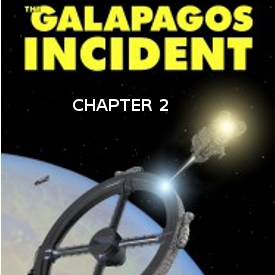
Odds are that if you’re under 30 you might not have heard of Cyril M. Kornbluth, an “old-timey” SF writer, back in the days before Forry Ackerman coined the term “sci fi.” Born in New York in 1923, Kornbluth was reputed to have a genius IQ; he taught himself to read and started writing stories by age seven. He entered CCNY at 14 or so on a scholarship, but didn’t graduate by virtue of being thrown out for “leading a student revolt.” (Like many high-IQ people, he was considered at least a bit eccentric by friends and colleagues.) Still in his teens, he became a member of the NY group The Futurians, which group included stellar writers like Fred Pohl, Donald Wollheim, Robert A. W. Lowndes, and his future wife Mary Byers (info courtesy of Wikipedia). As a teen, he was also a member of FAPA, the Fantasy Amateur Press Association. He later served in World War II in the Army, winning a Bronze Star in the Battle of the Bulge; and probably would have been one of the premier stars of SF had he not died of a heart attack in 1958.
Kornbluth started writing, as said before, at the age of 7; and began his publishing career with a story in a fanzine, later collaborating with Richard Wilson, the faneditor, on a story professionally published in a 1940 Astonishing, under a pen name. Although you may not know his name, you might have—especially if you like the older SF—seen some of his work that has slipped into popular culture, like “The Marching Morons,” which has been made into at least three TV episodes. Or “The Little Black Bag,” which has also been made and remade (both stories on Twilight Zone and/or Night Gallery, plus other series like Masters of Science Fiction. (In fact, many people, myself included, have praised “Marching Morons” as being somewhat of a parable of today’s United States under the current administration.) One of MM’s tag lines, “Would you buy that for a quarter?” was adapted for the original Robocop as “I’d buy that for a dollar!” Besides his many excellent short stories, he wrote several novels, both solo and in collaboration with people like Fred Pohl and Judith Merril (writing as “Cyril Judd”); some of the former being left unfinished at his death and later completed and/or revised by Pohl.
He has been cited as one of the significant writers of the “Golden Age” of SF (meaning the ‘forties and ‘fifties, I guess). He’s long been one of my personal favourites for the stories named above and many others, such as “The Mind Worm,” “The Silly Season,” “The Words of Guru,” as well as for the novels Gunner Cade, Gladiator-At-Law, The Syndic, The Space Merchants, and Not This August. https://wildsidepress.com/the-34th-golden-age-of-science-fiction-megapack-c-m-kornbluth-epub-mobi-pdf/

The link to this book is just above the photo (Figure 2). John Betancourt and a small group of other people has started what appears to be an attempt to collect dang near every early SF story or novel in ebook format, under the aegis of Wildside Press. There are probably over 300—and probably more—collections of all kinds, not just SF/F on their website, but the great thing is that these “Megapacks,” of which this book is the 34th out of 47 I saw on their website. The great thing about this is that every Megapack is only 99 cents! And for a dollar US, you can get approximately 20 stories and/or novels and novellas; for example, the Kornbluth volume cited here has 20 items, of which two are novels or novellas (The Syndic and The Naked Storm). You can’t even buy a used paperback for that price!
One of the things I hear people complain about regarding e-readers is that they’re expensive. More or less, they can be—but I have two that I either bought at yard sales ($20-25) and one that I bought at Value Village ($20 for the reader and $10 for the power supply). My e-readers vary between Kindles and Nooks (and one older no-name I got off eBay years ago). My point is, that there are many available; I started reading e-books over a decade ago on my HP iPaq pocket computer. Some are backlit, some are “paper white” e-paper, and some, like my Samsung tablet, are unreadable in direct sunlight because of glare. There’s something for everyone. Formats include ePub, mobi, PDF, and htm. (And you can use the Calibre program to translate between formats if the book is DRM-free. All of Wildside’s ebooks are DRM-free, as far as I know.)
There are also places on the internet to download many past SF authors’ works legally and for free; for example, a lot of Kornbluth’s work is found at https://www.ebooks-library.com/author.cfm/AuthorID/1724. There’s also Project Gutenberg. I don’t know how any of these people deal with rights; my assumption is that if they’re openly selling or making available these works, the rights have been dealt with.
So—what’s in this particular ebook? Here’s the TOC:
TIME BUM
TAKEOFF
THE SYNDIC
THE ALTAR AT MIDNIGHT
CRISIS!
THE GOLDEN ROAD
KAZAM COLLECTS
THE LUCKIEST MAN IN DENV
MAKE MINE MARS
THE MARCHING MORONS
THE REVERSIBLE REVOLUTIONS
SHARK SHIP
THE ADVENTURER
WITH THESE HANDS
THE WORDS OF GURU
THE NAKED STORM
THIRTEEN O’CLOCK
THE CITY IN THE SOFA
THE ROCKET OF
WHAT SORGHUM SAYS
Of the two longer works in this book, only The Syndic is genre; the other (The Naked Storm) is a mainstream work and sort of a condemnation either of lesbianism or, more likely, the kind of person who preys—sexually or otherwise—on naive persons. The rest is all genre short stories of varying quality. All of them were written in the ‘forties and ‘fifties; and for students of both history and genre writing, provide a terrific exploration of the way people thought and wrote “back in the twentieth century.” Myself, I like even the minor works; I’ve been a Kornbluth fan since I was very young.
The Syndic is very well known to older SF fans; it’s a humourous exploration of what might happen if “the mob” were to take over the US (and the rest of the world sinks into general obscurity). The US government in this book is extremely reminiscent of Soviet Russia back in the day; probably deliberately so. And, of course, the mob is full of sweetness and light. Here, Kornbluth provides humourous commentary on both sides. The Naked Storm is vividly written, but probably not something genre readers would care about. Social attitudes of the ‘50s, however, permeate the book, which is about an express locomotive going from New York to San Francisco, trapped in a snowstorm in the Rockies with a varying cast of characters. I enjoyed the characterizations, but not necessarily the attitudes.
My absolute favourites of the short stories are, not necessarily in any order: “The Words of Guru,” which still chills me; “The Marching Morons,” see comments above; “Thirteen O’Clock,” which reminds me of de Camp’s and Pratt’s Compleat Enchanter series. The others are good, but not great, in my opinion.
“Words of Guru” is about a young person whose parents were subject to atomic radiation (a common theme in the ‘50s; see Judith Merril’s “That Only A Mother,” for example), and who develops what appears to be a high-level IQ as well as some extremely strange friends and habits.
“The Marching Morons” should be so well known that a description isn’t necessary, but unfortunately, it’s not. It concerns a world several centuries in our future where the unintelligent have bred like rabbits and outnumbered the intelligent, educated types, who have tried to contribute to ZPG, or Zero Population Growth (gee, I haven’t heard that for a while!). So to keep the wheels of civilization turning, the intelligentsia (if you will), of which there are only a few million in a world population of several billion, are forced to take care of (in the sense of nurses and nannies) the others, from the shadows in order to not be exposed and wiped out. The “average Joe” is a lot dumber than in today’s world, and the hidden caretakers keep everything oiled and polished, and desperately hope for a solution to the overpopulation of stupes. The intrusion of a comatose twentieth-century salesman with no moral compass provides a solution, though not everyone is happy with the result. A must-read.
“Thirteen O’Clock” concerns a young man who discovers an odd clock in a hidden compartment in his late uncle’s attic; and when the clock strikes 13, he is transported to another world, a world of magic, where his mundane attitudes and knowledge help him through a number of strange magical experiences.
The other stories range from SF through pure fantasy; there are a couple of SF curiosities here—at least for us of the 21st century—regarding space flight; those, like Heinlein’s “The Man Who Sold the Moon” should remind us that space flight in the future is likely to be unlike anything anyone has prognosticated in the past. And for 99 cents, you just can’t beat all this free genre writing! I give this book a solid three flibbets!¤¤¤
I like comments on my column. You can register and comment here, or on my Facebook page, or in the Facebook groups I link in. Your comments are all welcome whether you agree with me or not. My opinion is, as always, my own, and doesn’t necessarily reflect the views of Amazing Stories or its owner, editor, publisher or other columnists. See you next time!











I’d buy that for a dollar!
I find it interesting that inflation was only from a quarter to a dollar, but I guess keeping it real wouldn’t play so well. 🙂